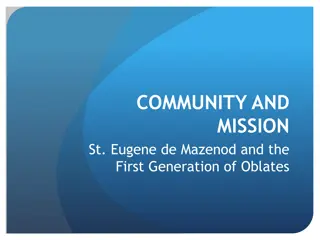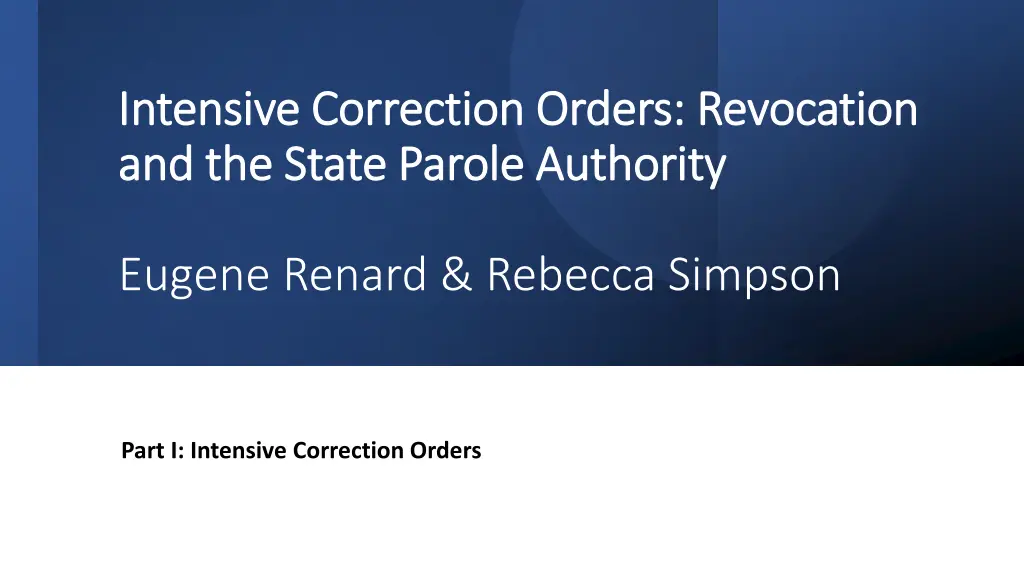
Understanding Intensive Correction Orders and Revocation Process
Explore the framework of Intensive Correction Orders (ICOs) in NSW, focusing on sentencing reforms, principles, and revocation procedures before the State Parole Authority. Learn about community safety considerations and the supervision of ICOs for domestic violence offenses.
Download Presentation

Please find below an Image/Link to download the presentation.
The content on the website is provided AS IS for your information and personal use only. It may not be sold, licensed, or shared on other websites without obtaining consent from the author. If you encounter any issues during the download, it is possible that the publisher has removed the file from their server.
You are allowed to download the files provided on this website for personal or commercial use, subject to the condition that they are used lawfully. All files are the property of their respective owners.
The content on the website is provided AS IS for your information and personal use only. It may not be sold, licensed, or shared on other websites without obtaining consent from the author.
E N D
Presentation Transcript
Intensive Correction Orders: Revocation Intensive Correction Orders: Revocation and the State Parole Authority and the State Parole Authority Eugene Renard & Rebecca Simpson Part I: Intensive Correction Orders
In 2018 significant sentencing reforms were passed by the NSW Government in a package of criminal justice reforms. These included the Crimes (Sentencing Procedure) Amendment (Sentencing Options) Act 2017 which commenced on 24 September 2018. This Act restructured and amended provisions relating to ICOs. Part I of this paper is a summary of the relevant legislative principles and discussion and analysis of the way in which the Courts have interpreted these. Introduction Part II is a summary of the processes involved with revocation of intensive corrections orders and tips for appearing before the State Parole Authority.
An ICO is a custodial sentence which can only be imposed if the court is satisfied there is no possible alternative: s 5(1) Crimes (Sentencing Procedure) Act 1999 ( CSPA ). An ICO is a term of imprisonment that is served by way of intensive correction in the community. Section 7(1) of the CSPA provides that a court that has sentenced an offender to imprisonment in respect of one or more offences may make an ICO directing that the sentence be served in the community. What is an ICO?
Determine pursuant to s 5 that no sentence other than a term of imprisonment is appropriate Determine the length of the sentence to be imposed Sentencing : 3 Stage Process Determine whether the sentence should be served by way of an ICO or full-time custody (Consistent with the principles stated in R v Zamagias [2002] NSWCCA 17 and Douar v The Queen [2005] NSWCCA 455; 159 A Crim R 154)
Section 66ss(1-3) of the CSPA provides that community safety must be the paramount consideration when the sentencing court is deciding whether to make an ICO in relation to an offender (s66(1) and is required to assess whether the order or full-time imprisonment is more likely to address the risk of reoffending. Community Safety S66(3) provides that the Court must consider the purposes of sentencing: s 3A and any relevant common law sentencing principles and may consider any other matters that the court thinks relevant.
Any intensive correction order imposed for a domestic violence offence must be supervised unless the Court gives reasons why it is not appropriate to impose that sort of an order. (S4A) Considerations Considerations specific to specific to Domestic Violence Domestic Violence A Court must not make an ICO unless the sentencing court is satisfied the victim of the domestic violence offence any person with whom the offender is likely to reside will be protected (either by ICO or because of some other reason) (s4B(1) offences offences The Court must not make a home detention condition if it believes the offender will reside with the victim. S4B(2)
Section 67 proscribes a sentencing court from imposing an ICO for a raft of precluded offences set out in Appendix B to the paper. It is important to have regard to s 67 when advising clients on potential sentence outcomes Prudent to include an acknowledgment in any written instructions that the offence being pleaded to is precluded from being eligible an intensive correction order. Precluded Precluded Offences Offences
Section 68(1) provides that an ICO must not be made in respect of a single offence if the duration of the term of imprisonment imposed for the offence exceeds 2 years. However, it can be made in respect of an aggregate sentence of imprisonment but only if the duration of the term of the aggregate sentence does not exceed 3 years (s68(2) CSPA). Cross v R Abel v R Structuring the Structuring the Intensive Intensive Correction Correction Order Order
Section 69 provides that the Court must have regard to (but is not bound by) the contents of any assessment report obtained in relation to the offender (assessment report is defined as a report made by a community correction or juvenile justice officer) and evidence from a community correction officer or any other information before the court. The relevant statutory requirements for those reports are found in Pt 2 Division 4B (ss17b-17D) Crimes (Sentencing Procedure) Act. Sentence Sentence Assessment Assessment Reports Reports
R v Pullen R v Fangaloka R v Casella Karout v R Cross v R Blanch v R Kennedy v R R v Kember Wany v Director of Public Prosecutions Mandranis v R [2021] NSWCCA 97 Abel v R CCA Decisions CCA Decisions
S 66 simply requires a sentencing court to consider whether an intensive correction order or an order for full time custody is more effective at addressing the risk of reoffending (Fangaloka) The purposes of sentencing in s 3A of the CSPA are mandatory, rather than subordinate considerations (Fangaloka, Karout, Wany v DPP) the paramount consideration of community safety must be weighed and assessed in the context of all facts, matters and circumstances relevant to the particular sentencing task applying the instinctive synthesis approach (Pullen, Fangaloka) where the sentencing judge had determined a length of sentence that precluded the imposition of an ICO, there was no error in failing to refer to s 66 (Cross) The objective seriousness, general deterrence and other considerations in s3A may dictate that it is not appropriate to impose an ICO, even where the risk of reoffending might be mitigated by an ICO (Karout, Cross) Having reached a conclusion that an ICO is appropriate under s66(2) a sentencing court retains a discretion to refuse to make such an order (Wany v DPP at [64] Principles
Restrictive Approach : R v Fangaloka The Court must positively conclude that an ICO (as opposed to full-time custody) is more likely to address an offender s risk of offending R v Fangaloka [2019] NSWCCA 173 at [63] per Basten JA
The result of these amendments is that in cases where an offender s prospects of rehabilitation are high and where their risk of reoffending will be better managed in the community, an ICO may be available, even if it may not have been under the old scheme. The new scheme makes community safety the paramount consideration. In some cases, this will be best achieved through incarceration. That will no doubt be the case where a person presents a serious risk to the community. In other cases, however, community protection may be best served by ensuring that an offender avoids gaol. As the second reading speech makes plain, evidence shows that supervision within the community is more effective at facilitating medium and long term behavioural change, particularly when it is combined with stable employment and treatment programs. (R v Pullen [2018] NSWCCA 264) Facilitative Approach
The CCA in a further decision disapproved of the restrictive approach set out by Justice Basten in Fangaloka. 49 For my part I also prefer the approach taken by Beech-Jones J. Since it is necessary, in this case, to make a somewhat invidious choice between the guidance given by two powerfully reasoned and supported decisions of this Court, I will adopt the approach taken by Beech-Jones J. In other words, I do not accept that the determinative consideration in the decision whether to make an ICO is which of the two modes of serving the sentence is more likely to address the offender s risk of reoffending, and that, unless a favourable opinion in that respect is reached, an ICO is excluded. I do not accept that, unless the balance of those two considerations falls in favour of an ICO, an ICO should not be imposed. I do not see any reason why subs (2) of s 66 should be elevated to dominate or override the more general consideration required by subs (1). Mandranis v R 50 Like Harrison J, I consider that s 66(1) subordinates (but does not exclude) other considerations to community safety. That is the inescapable consequence of declaring community safety to be the paramount consideration . It is important to note, however, that is so only at the point when consideration is being given to whether to make an ICO. Thus, rehabilitation (s 3A (d)) will give way to community safety where appropriate; in an appropriate case, accountability and denunciation may be given less weight than they otherwise would. In this respect, it is not to be overlooked that the s 3A purposes have already been taken into account in the selection of the term of the sentence. By s 66(3), they are again to be taken into account in relation to the specific question whether the sentence is to be served by way of ICO. It is only in this context that they may be said to be subordinate . That does not diminish their importance at the earlier point of the sentencing determination. This is what I think Harrison J had in mind in [86] of Pullen. [2021] NSWCCA 97 51 Primacy must be given to the clear language of s 66(1) which, in terms, places community safety as the paramount consideration. Which of the two modes of serving the sentence is more likely to address the offender s risk of reoffending is one of the factors relevant to the assessment of community safety, which, as Harrison J observed in Pullen, may best be served, in different cases, in different ways. The better way of addressing an offender s risk of reoffending is but one of the considerations that contribute to the s 66(1) assessment.
It would be unjust (and contrary to ss 24 and 47) to impose a sentence that did not take account of pre-sentence custody. It would be equally unjust to deprive an offender of the opportunity to serve the sentence in the community by way of intensive correction because such an order is not possible when the commencement of the sentence is backdated to take account of pre-sentence custody. Pre-sentence custody can be deducted from a notional head sentence to bring term in range for ICO From time to time established procedures have to be moderated in order to meet changing circumstances. The process laid down in Zamagias and repeatedly endorsed was and remains appropriate for the circumstances to which it applies. When Howie J wrote his judgment in Zamagias, there was no provision for an offender to serve a sentence by way of intensive correction in the community. An offender who had served time in custody prior to sentencing was entitled to have that time recognised without sacrificing other options that might be available. The provision for ICOs, as explained by the Attorney General in the Second Reading Speech, was designed not only to benefit offenders, but also the community by the rehabilitation of offenders and thereby the prevention of crime. That provision should not be rendered inoperable by ss 70 and 71. There is, in my opinion, a solution to this problem. It involves a degree of departure from the Zamagias three-step process. Provided that the appropriate term of the sentence is determined before consideration is given to an ICO, it would, if an ICO is found to be appropriate, be acceptable for that term to be adjusted by the deduction of a period equivalent to the term of pre-sentence custody, so that the ICO commences on the day it is made (in compliance with s 71) and is co-extensive with the term of imprisonment (as required by s 70). The sentence actually recorded and imposed would be less (by the length of the pre-sentence custody) than the sentence found to be appropriate to meet the purpose of sentencing.



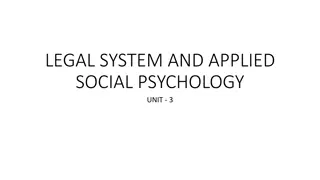


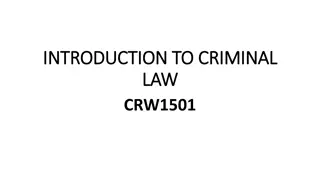
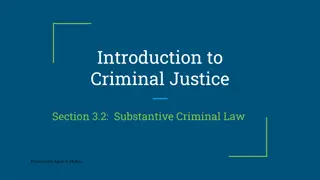
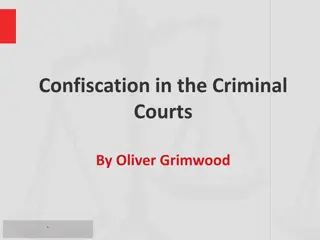
![Briefing on the Criminal Procedure Amendment Bill [B12-2021] to the Portfolio Committee on Justice and Correctional Services](/thumb/157093/briefing-on-the-criminal-procedure-amendment-bill-b12-2021-to-the-portfolio-committee-on-justice-and-correctional-services.jpg)
